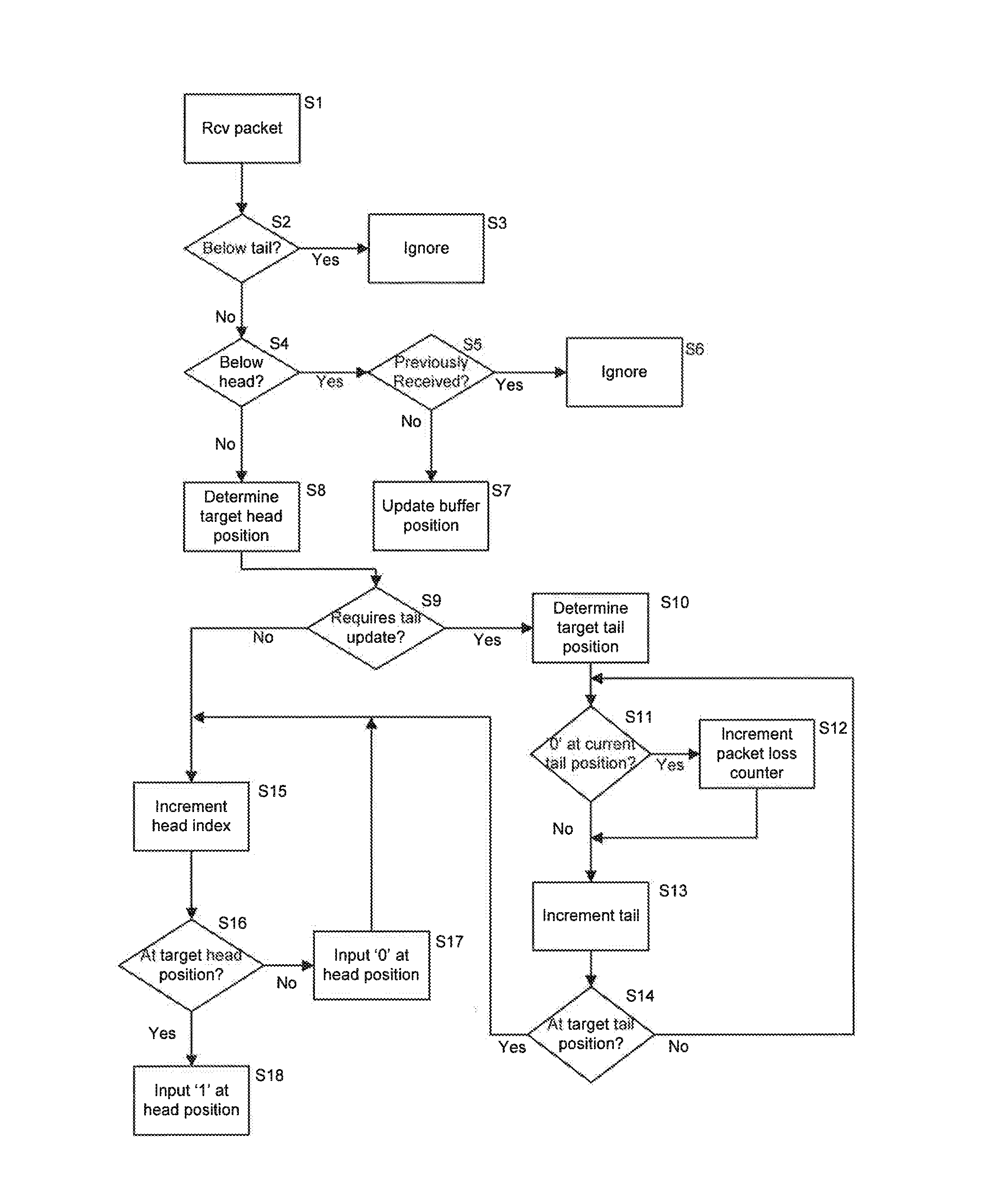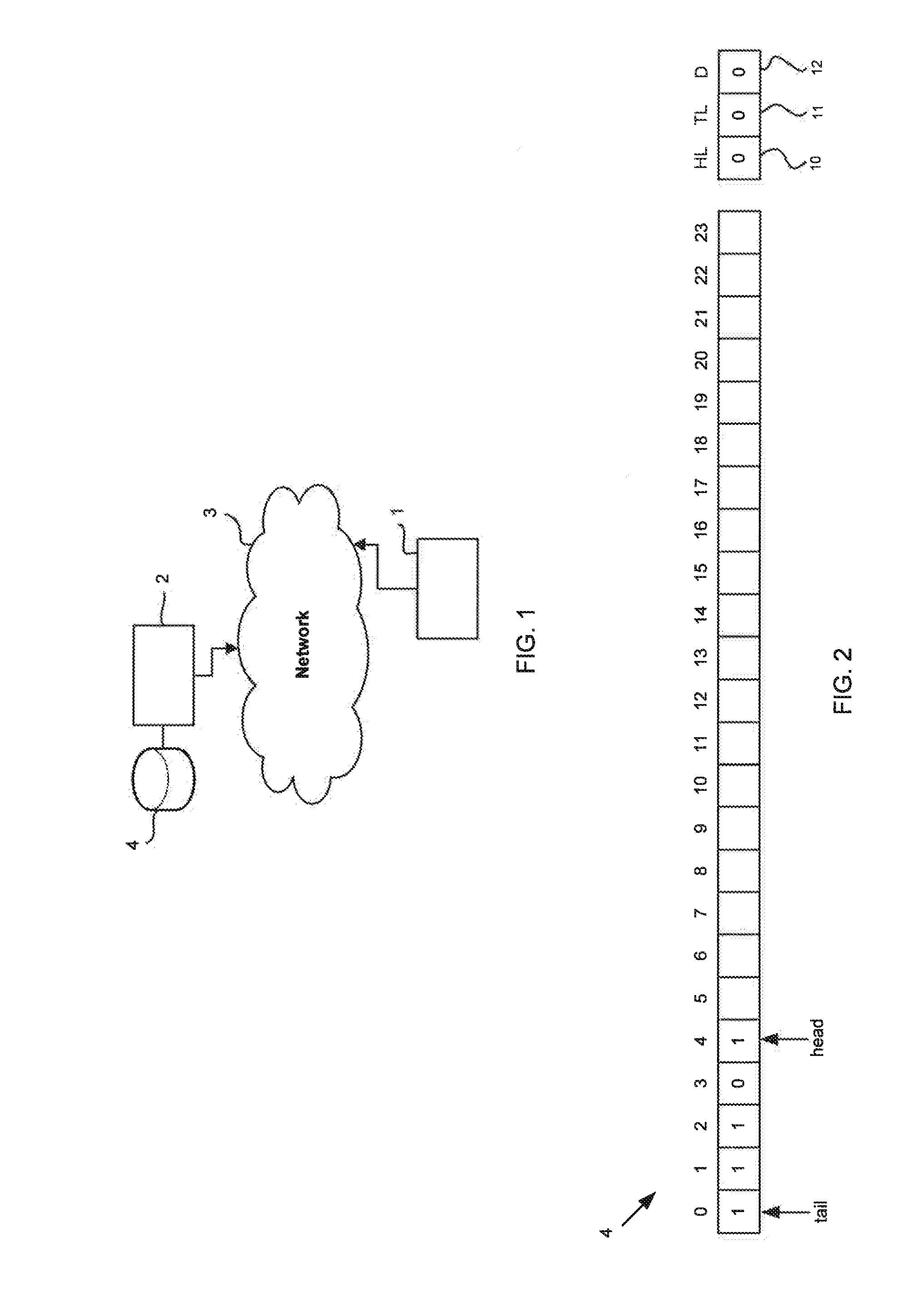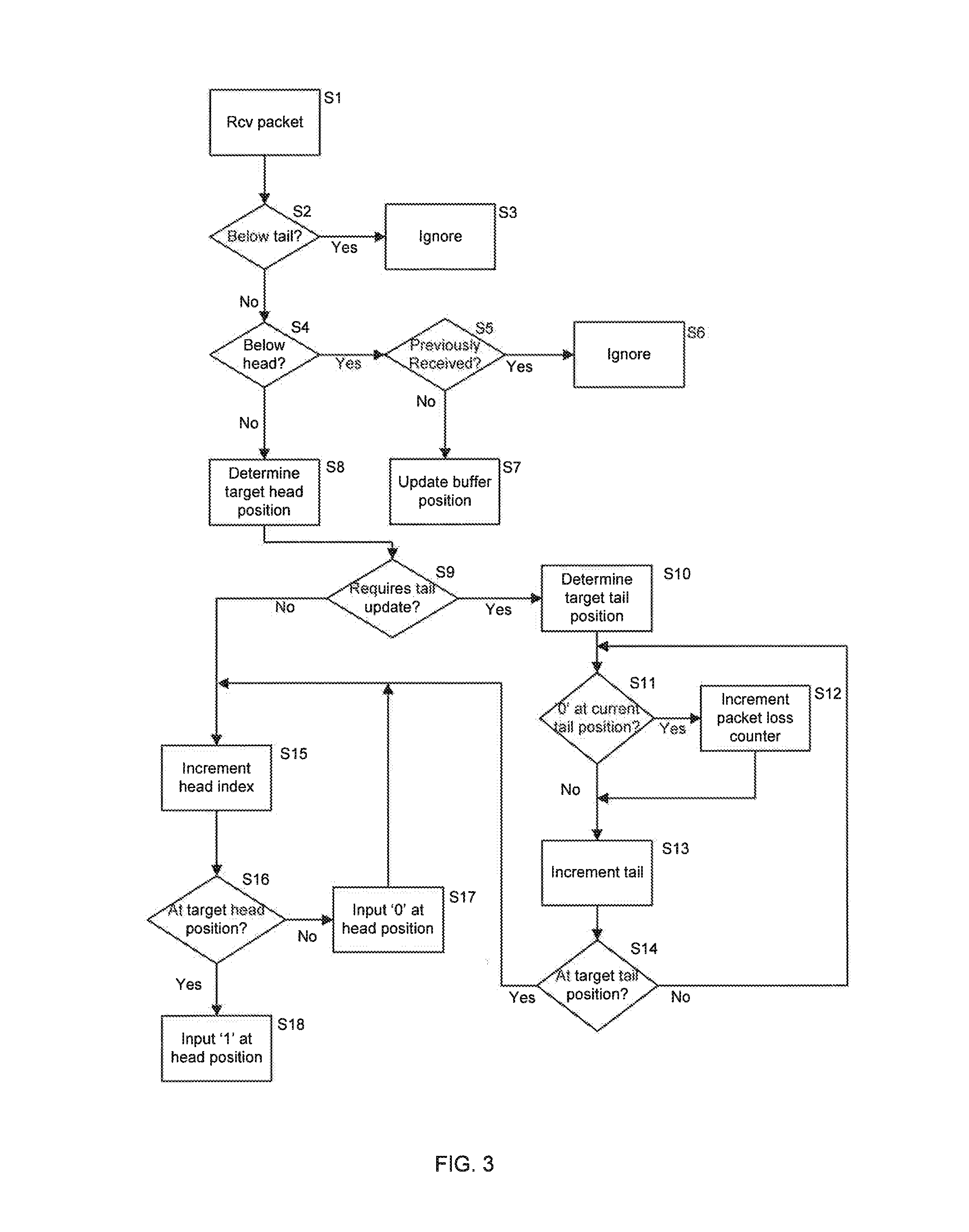Data traffic processing and analysis
- Summary
- Abstract
- Description
- Claims
- Application Information
AI Technical Summary
Benefits of technology
Problems solved by technology
Method used
Image
Examples
Embodiment Construction
[0037]In FIG. 1 a first device 1 is connected to a second device 2 via a network 3 so that the first device 1 and the second device 2 can exchange data between one another. The first and second devices 1, 2 may each take any form. In one embodiment, one or both of the first and second devices 1, 2 may comprise a mobile device such as a smartphone, a laptop, etc., while the other of the first and second devices 1, 2 may comprise a server. The network 3 may be any network and may be the Internet.
[0038]The first device 1 is arranged to transmit data packets to the second device 2. In particular, the first device 1 is arranged to transmit data packets using a communications protocol which does not provide monitoring of lost data packets (i.e. data packets which having been sent from the first device 1 but which do not reach the second device 2). For example, the first device 1 may be arranged to transmit User Datagram Protocol (UDP) data packets to the second device 2. In the following ...
PUM
 Login to View More
Login to View More Abstract
Description
Claims
Application Information
 Login to View More
Login to View More - R&D
- Intellectual Property
- Life Sciences
- Materials
- Tech Scout
- Unparalleled Data Quality
- Higher Quality Content
- 60% Fewer Hallucinations
Browse by: Latest US Patents, China's latest patents, Technical Efficacy Thesaurus, Application Domain, Technology Topic, Popular Technical Reports.
© 2025 PatSnap. All rights reserved.Legal|Privacy policy|Modern Slavery Act Transparency Statement|Sitemap|About US| Contact US: help@patsnap.com



